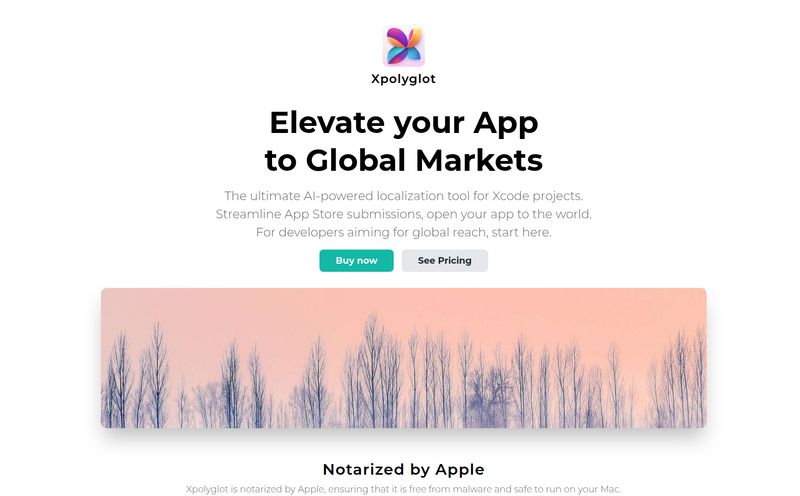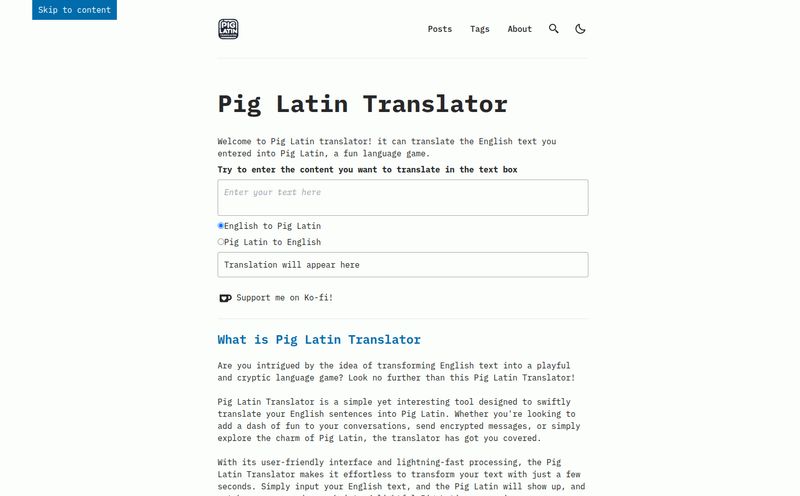We’ve all been there. You've just spent the better part of a week crafting the perfect PowerPoint presentation. The alignment is crisp. The SmartArt diagrams are things of beauty. Your branding is on point. It’s a masterpiece. Then, the request comes in: “Can we get this in Japanese by tomorrow?”
A cold sweat begins to form. You know what comes next. The copy-paste tango with Google Translate or DeepL. You paste the translated text back into your slide, and… KABOOM. Your beautiful, orderly presentation explodes. Text boxes overflow, fonts go haywire, and your meticulously designed layout now looks like it was put through a blender. I once spent an entire afternoon—I'm not exaggerating—manually realigning text boxes for a single presentation for a client in Germany. The time I wasted was probably worth more than the project itself. It was painful.
For years, I've just accepted this as a cost of doing international business. A necessary evil. So when I stumbled upon a tool called DeckFlow, which claims to be an AI-powered translator that preserves original formatting, my inner skeptic just rolled his eyes. “Yeah, right,” I muttered. But my curiosity, and the memory of that wasted afternoon, got the better of me. I had to see if it was legit.
So, What Exactly is DeckFlow?
In simple terms, DeckFlow is a specialized translation tool built for the one thing most other tools fail at: presentations. It’s designed to take your PowerPoint (PPT/PPTX), Keynote, or even PDF files, translate the text using AI, and then hand it back to you with the layout, images, and design elements still perfectly in place. It's not trying to be a general-purpose translator; it's a specialist. And in my world of SEO and marketing, specialization is almost always a good thing.
Think of it as a smart assistant who not only speaks 50+ languages but also has a degree in graphic design. It doesn’t just see words; it sees the entire slide as a cohesive unit.

Visit DeckFlow
The Formatting Nightmare We All Know and Hate
Why is this such a big deal? Because text length is a fickle beast. A concise English phrase can easily become a long, sprawling sentence in German or a compact set of characters in Japanese. Standard translation tools don't account for this. They just give you the text, and it's your problem to make it fit. It’s like getting a new engine for your car, but it comes with a note saying “some assembly and resizing of your car’s frame may be required.” It completely defeats the purpose of the convenience you were seeking.
This formatting breakdown isn’t just an aesthetic issue, it's a communication issue. A sloppy-looking presentation undermines your professionalism. It screams “we did this at the last minute.” It distracts your audience from your actual message. Your brilliant Q3 financial projections are lost because the viewer is mesmerized by a title text box that’s bleeding into your main chart. Not good.
How DeckFlow Actually Changes the Game
So, I uploaded a fairly complex 30-slide presentation I had on hand. One with custom fonts, several data tables, and a few finicky SmartArt graphics that always break if you so much as look at them wrong. I was ready for disappointment. But what I got back was… surprisingly good. Here’s what stood out.
It Genuinely Respects Your Layout
This is the magic right here. DeckFlow didn't just translate the text; its AI seemed to understand the context of the text boxes. It intelligently resized fonts and adjusted line breaks to make the new language fit within the original design constraints. My tables were still tables. My images were right where I left them. The SmartArt was, for the most part, still smart. It wasn't just a translation; it was a professional localization of the slide's visual structure. This alone is its killer feature.
Speaking Your Industry’s Lingo
One of my biggest pet peeves with AI translation is jargon. In the SEO world, terms like “SERP,” “crawl budget,” or “canonicalization” can get horribly mistranslated by generic engines. DeckFlow has a “Custom Terminology” feature. This lets you create a glossary of specific terms and their correct translations. For any business operating in a technical, medical, legal, or other niche field, this is huge. You can ensure your proprietary terms or industry-specific acronyms are translated consistently and accurately across every single slide. No more awkward moments explaining what the AI “meant to say.”
Got a Massive Presentation? No Sweat
I've had web-based tools time out or crash on me with files larger than 100MB. It's a common bottleneck. DeckFlow claims to handle files up to 1GB. One. Gigabyte. That’s a massive presentation, likely packed with high-resolution video and images. While my test file wasn't that big, knowing the headroom is there provides a lot of peace of mind for those major quarterly reviews or investor pitches.
Let's Be Real: The Not-So-Perfect Stuff
Okay, I'm a professional, not a cheerleader. No tool is perfect, and it would be dishonest to pretend otherwise. DeckFlow has a couple of things you need to be aware of.
First, the AI is brilliant, but it's still AI. It's not a sentient, culturally-aware human translator. While it does a phenomenal job, I would still recommend a quick proofread by a native speaker for any mission-critical documents. Think of DeckFlow as doing 95% of the heavy lifting, saving you hours of tedious work, but that final 5% of human review is still a smart move.
Second, their business model is straightforward, which I respect, but it might not be for everyone. There isn't a generous free trial; usage is limited before you have to pay. And, more importantly, their policy states no refunds after purchase. This means you need to be pretty sure it’s the right tool for you before you commit. I get it from their perspective—they're providing a service upfront—but it's something to consider before you click “buy.”
The Big Question: What's the Price Tag?
When I was looking into DeckFlow, I noticed they don’t list their pricing in a big splashy way on the homepage. Typically, this means the pricing is either variable or they want you to engage with their platform first. As of my review, you'll need to visit their website and likely create an account to see the most current pricing structure. You can find their official site here.
Here’s my take on this: don’t just look at the dollar amount. Calculate the cost of your own time. How much is an hour of your time worth? Or an hour of your graphic designer's time? If it takes you four hours to manually translate and reformat a presentation, what's the cost of that? When you frame it that way, a tool like DeckFlow can often pay for itself after just one or two uses. It's an investment in efficiency.
Who Is This Tool Really For?
DeckFlow isn't for the person who needs to translate a single sentence once a year. It's built for professionals.
- International Consultants & Sales Teams: Who need to quickly adapt pitches for different regions.
- Global Marketing Departments: That have to roll out campaigns across multiple languages while maintaining brand consistency.
- Academic Researchers & Educators: Sharing their findings with a global community.
- Legal and Technical Professionals: Who rely on precise terminology and clear documentation.
If you live in PowerPoint and regularly communicate with a multilingual audience, you are the person DeckFlow was made for.
My Final Verdict From a Jaded Marketer
I'm genuinely impressed. DeckFlow took one of the most tedious, frustrating tasks in my workflow and made it... easy. It’s a classic example of a tool that does one thing and does it exceptionally well. It's not magic, and it doesn't absolve you of the need for a final quality check, but it’s a massive, powerful lever. It turns a half-day project into a ten-minute task.
The lack of a generous free trial or refunds is a hurdle, but for the right professional, the value proposition is crystal clear. It frees you from the tyranny of the text box, and for that, I'm a fan. It's earned a spot in my digital toolbox.
Frequently Asked Questions
Is DeckFlow better than Google Translate for presentations?
For translating a presentation? Absolutely, it's not even a fair comparison. While Google Translate is great for quick text lookups, it has zero awareness of formatting. DeckFlow is designed from the ground up to preserve your slide's layout, which is the whole point.
How accurate is the AI translation?
It's very good, on par with leading AI translation engines. However, accuracy can depend on the source language, context, and slang. The custom terminology feature greatly improves accuracy for industry-specific content. As a best practice, always have a fluent speaker do a quick review.
Can DeckFlow translate scanned PDFs?
Likely not. DeckFlow needs selectable text to work its magic. If your PDF is just an image of text (like a scan), it won't be able to identify and translate the words. You would need to run it through an OCR (Optical Character Recognition) tool first.
What happens if the formatting isn't 100% perfect?
In my test, it was about 95% perfect. There might be a rare case where a very complex element needs a tiny manual nudge. But the point is, it saves you from doing 100% of the work. Fixing one small element is infinitely better than rebuilding an entire slide from scratch.
Do I need to create an account to try it?
Yes, to use the service, even for limited free usage, you will almost certainly need to sign up for an account. This allows the system to manage your files, custom terminology, and usage limits.
Reference and Sources
- DeckFlow Official Website
- PowerPoint Tips for Stunning Presentations - A good resource from Microsoft for general presentation design.



